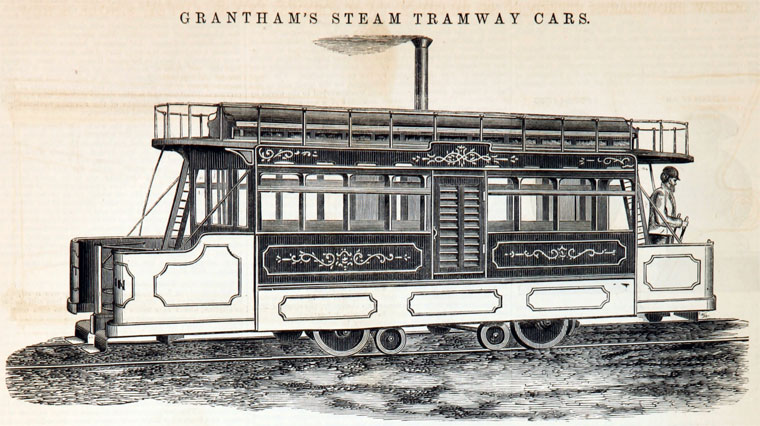
(1) An illustration of Grantham’s steam tramcar that was published in Grace’s Guide to British Industrial History.
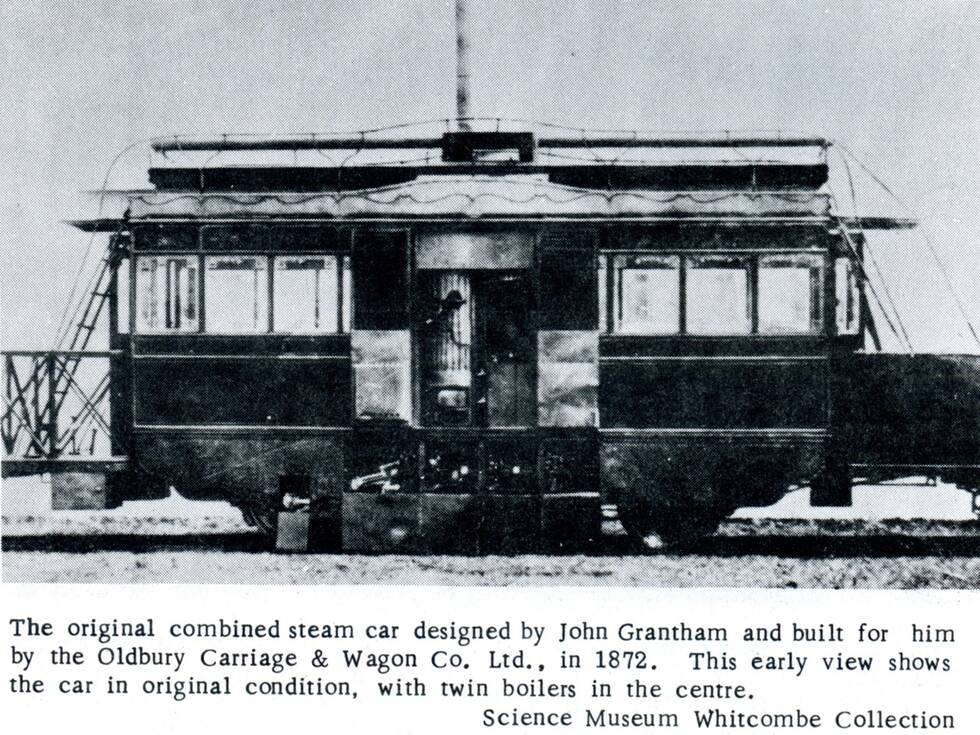
(2) John Grantham’s steam tram in original condition, Science Museum, Whitcombe Collection.
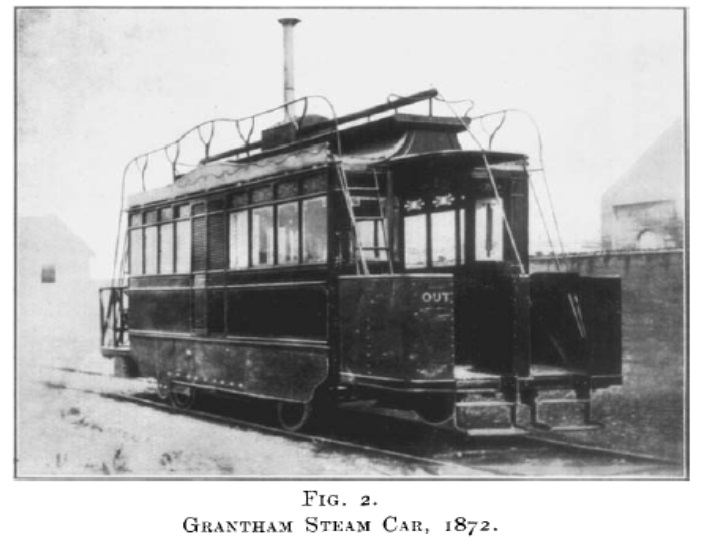
(3) Grantham’s steam car, 1872, photographed at West Brompton in 1874.
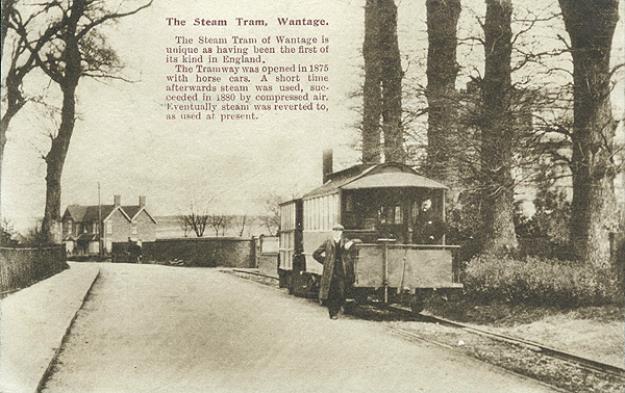
(4) Postcard featuring Wantage steam tramway (National Tramway Museum collection)
Another combined steam tramcar was built by the Sheffield-based Savile Street Foundry in or around 1881. This was an open-topped double deck vehicle with knifeboard seating on the upper deck. Unlike its predecessors, however, this was a single-ended tramcar, with a small engine compartment housed at the driver’s end of the lower deck and a single stairway at the other end. Unlike the somewhat similar looking Eades reversible horse tramcar, however, its body was not reversible, meaning that it needed to be turned with the aid of either a turning circle or a triangle reverser.
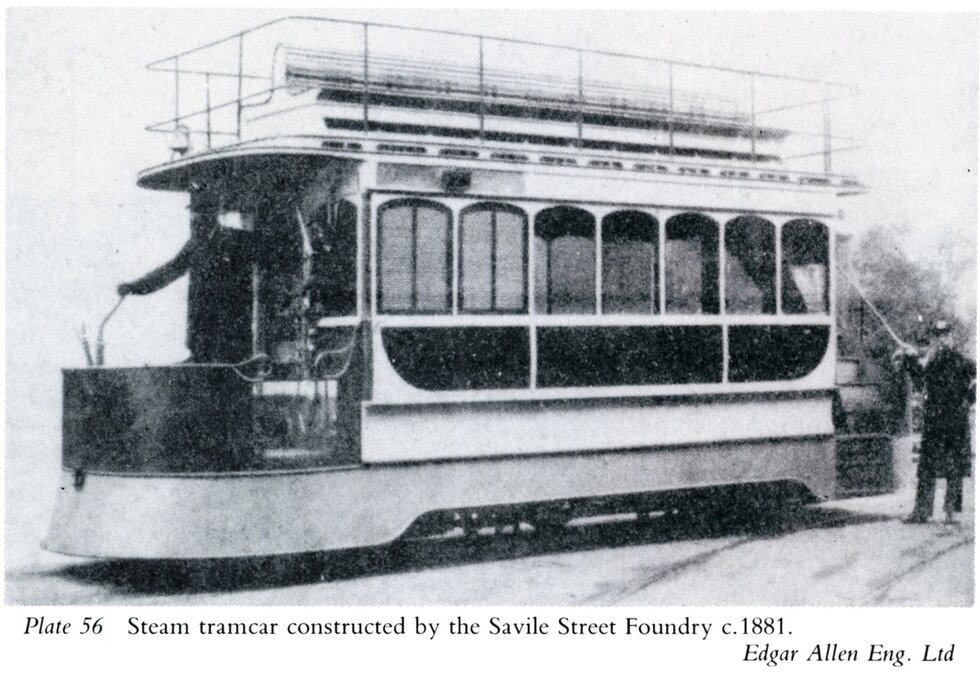
(5) Savile Street Foundry steam tramcar, around 1881.
The National Tramway Museum has two steam trams in its collection – unfortunately neither are currently operational, but you can read about them on our website as below:
1) New South Wales Government Steam Tram No. 47: https://www.tramway.co.uk/trams/new-south-wales-47/
2) Manchester, Bury, Rochdale, Oldham steam tram No. 84 (parts of!): https://www.tramway.co.uk/trams/mbro-84/
With thanks to Museum volunteer Jim Dignan for producing this article.
Image References:
(1) Grace’s Guide to British Industrial History.
(2) Science Museum, Whitcombe Collection.
(3) History of the steam tram: paper read before the Institution of Locomotive Engineers by Dr. H.A. Whitcombe, on 6th January 1937, p.336.
(4) National Tramway Museum collection
(5) Edgar Allen Engineering Ltd.
